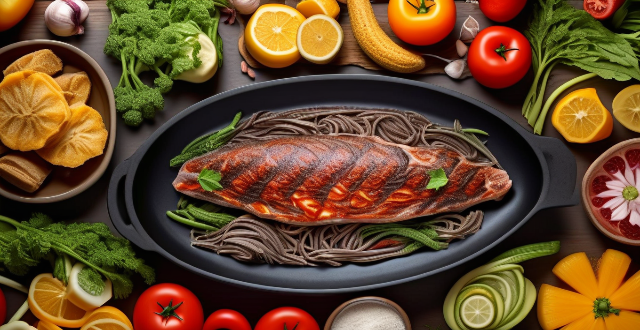Chilies play a pivotal role in Mexican cuisine, contributing heat, flavor complexity, color, and cultural significance. They offer varying intensities of spiciness, from mild to very hot, and their fruity or earthy flavors complement other ingredients. Visually appealing with vibrant colors, chilies also have nutritional benefits like antioxidants and metabolism boost. They are versatile in cooking, used fresh, dried, or smoked, and pair well with acidic and herbal ingredients. Chilies are integral to traditional dishes like enchiladas and mole sauce, showcasing their essential role in defining the unique taste profile of Mexican food.

The Role of Chilies in Mexican Cuisine
Mexican cuisine is renowned for its bold and complex flavors, with chilies playing a central role in defining its unique taste profile. The use of chilies not only adds heat but also depth and nuance to the dishes. Let's explore how chilies contribute to the distinctive taste of Mexican food:
Heat and Spice
- Capsaicin Content: Chilies contain capsaicin, which stimulates the nerves in the mouth and tongue, creating the sensation of heat.
- Varying Intensities: Different types of chilies offer varying levels of heat, from mild to fiery, allowing cooks to tailor the spiciness to their preference.
Flavor Complexity
- Fruitiness: Some chilies, like the poblano, have a fruity flavor that complements other ingredients.
- Earthy Tones: Dried chilies often bring earthy, smoky notes that enrich sauces and braises.
Color and Appeal
- Visual Interest: The vibrant colors of chilies, ranging from green to red to deep brown, add visual appeal to dishes.
- Contrast: The brightness of fresh chilies contrasts well against the muted tones of cooked ingredients.
Cultural Significance
- Regional Variations: Each region in Mexico has its preferred types of chilies, contributing to local culinary traditions.
- Historical Use: Chilies have been a staple in Mexican cooking since pre-Columbian times, forming an integral part of the country's gastronomic history.
Nutritional Benefits
- Antioxidants: Many chilies are rich in antioxidants, which can have health benefits.
- Metabolism Boost: Capsaicin has been shown to boost metabolism and aid in digestion.
Versatility in Cooking
- Fresh or Dry: Chilies can be used fresh, dried, or even smoked, each method offering different flavors and textures.
- Stewing and Roasting: They can be stewed into sauces, roasted for a smoky flavor, or used raw for a crisp crunch.
Pairing with Other Ingredients
- Acidic Balance: The heat from chilies pairs well with acidic ingredients like lime juice or tomatillos.
- Herbal Affinity: Cilantro (coriander) is often used alongside chilies to provide an herbal note that balances the heat.
Use in Traditional Dishes
- Enchiladas and Chiles Rellenos: These dishes feature chilies as a primary ingredient, showcasing their versatility.
- Mole Sauce: A classic example where chilies combine with nuts, chocolate, and spices to create a complex sauce.
In conclusion, chilies are much more than just a source of heat in Mexican cuisine; they are essential components that provide depth, color, cultural significance, and nutritional value to the dishes. Their ability to harmonize with various other ingredients makes them indispensable in capturing the essence of Mexican food.